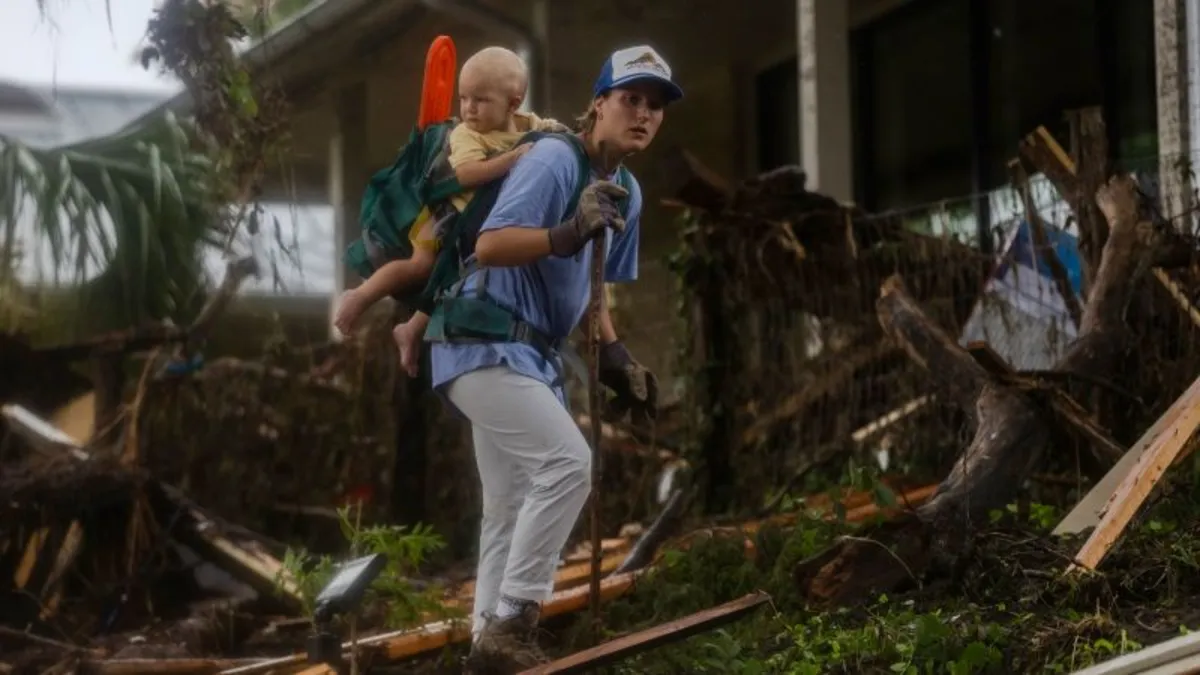
For countless families in the Texas Hill Country, the most serious warnings about the deadly flooding that struck last week came alarmingly late. Many were sound asleep, while others, accustomed to the region's extreme weather, were kept awake by heavy rains and thunderous cracks of lightning. “I thought it was just lightning and thunder,” recalled Caroline Cutrona, a counselor at Camp Mystic, where young girls bond in rustic cabins named the Bubble Inn and the Giggle Box. “I had no idea of the severity.” Unfortunately, she was not alone in her misunderstanding.
Despite the chaos, state emergency management officials had activated emergency response resources as early as Wednesday evening, issuing warnings about potential flooding as the July Fourth holiday weekend approached. The alerts included critical warnings from the National Weather Service (NWS), which provided preliminary lead times of over three hours before flash flooding conditions ensued. However, those warnings would soon escalate in urgency.
The torrential rains transformed the once-pristine Guadalupe River into a raging torrent, unleashing devastating cascades in the early hours of Independence Day. This catastrophic event spanned 40 miles across Kerr County, resulting in the tragic loss of at least 103 lives, including 36 children. As of Friday evening, the confirmed death toll in Texas had reached 129, with at least 150 individuals still unaccounted for statewide—140 of them in Kerr County alone.
In a shocking turn of events, more than a summer's worth of rain fell in the area overnight, causing the river to swell from about 3 feet to 30 feet in just 45 minutes. This rapid rise turned a beloved waterway into a harbinger of death. The catastrophic flooding devastated communities across Kerr and Kendall counties, obliterating neighborhoods, RV parks, and approximately 18 youth camps that host thousands of children each summer.
“The first thing I thought was, ‘This is not real. Wake up, Caroline. Wake up,’” Cutrona told CNN’s Anderson Cooper. “‘I’m in a dream,’ and that’s what I wanted it to be.” Here’s a detailed timeline of how this nightmare unfolded in Texas.
6:29 p.m. CT: The Texas Division of Emergency Management announces the activation of state emergency response resources, anticipating increased flooding threats in West and Central Texas.
Thursday, July 3
6:36 a.m. CT: The NWS issues short-term guidance indicating that morning thunderstorms could lead to flooding rainfall.
7:00 a.m. CT: The NWS releases a flood outlook warning of potential flash flooding across parts of Central Texas.
10:00 a.m. CT: County judges and city mayors are invited to a daily call to discuss weather forecasts, with a regional coordinator reaching out to local officials to ensure they were aware of potential flooding risks.
1:18 p.m. CT: A flood watch is issued for Kerrville, forecasting 5 to 7 inches of rainfall through the night.
6:30 p.m. CT: The NWS warns of rapid runoff and potential flash flooding, emphasizing the nocturnal timing of the event.
Friday, July 41:14 a.m. CT: The NWS issues a flash flood warning for parts of Kerr County.
2:30 a.m. CT: Local business owner Lorena Guillen checks the river's height and is assured by local authorities that her RV tenants are safe.
3:00 a.m. CT: Camp Mystic staff assist campers in evacuating as floodwaters rapidly rise.
3:27 a.m. CT: A local firefighter reports high water on the main highway.
3:30 a.m. CT: Kerrville City Manager Dalton Rice states that first responders begin to be swept away by floodwaters.
3:50 a.m. CT: Multiple distress calls pour in from residents along State Highway 39, indicating serious flooding conditions.
4:03 a.m. CT: The NWS issues a flash flood emergency warning, declaring an extremely dangerous situation.
5:00 a.m. CT: The Guadalupe River bursts its banks, sweeping away homes, cars, and campers.
5:30 a.m. CT: Notifications for flood warnings are sent out, but many residents report not receiving timely alerts.
8:30 a.m. CT: Kerr County officials confirm fatalities due to the flooding.
10:04 a.m. CT: Reports indicate that the Kerr County Sheriff’s Office failed to send a CodeRED Alert until late in the morning.
6:30 p.m. CT: The US Coast Guard begins rescue operations, but uncertainty remains about the total number of survivors.
The tragic flooding in Texas Hill Country serves as a stark reminder of the power of nature and the importance of heeding emergency alerts. As families mourn their losses, local officials face scrutiny over the response to this devastating flooding event. The community stands united in the aftermath, pledging to support each other and learn from this painful chapter in their history.